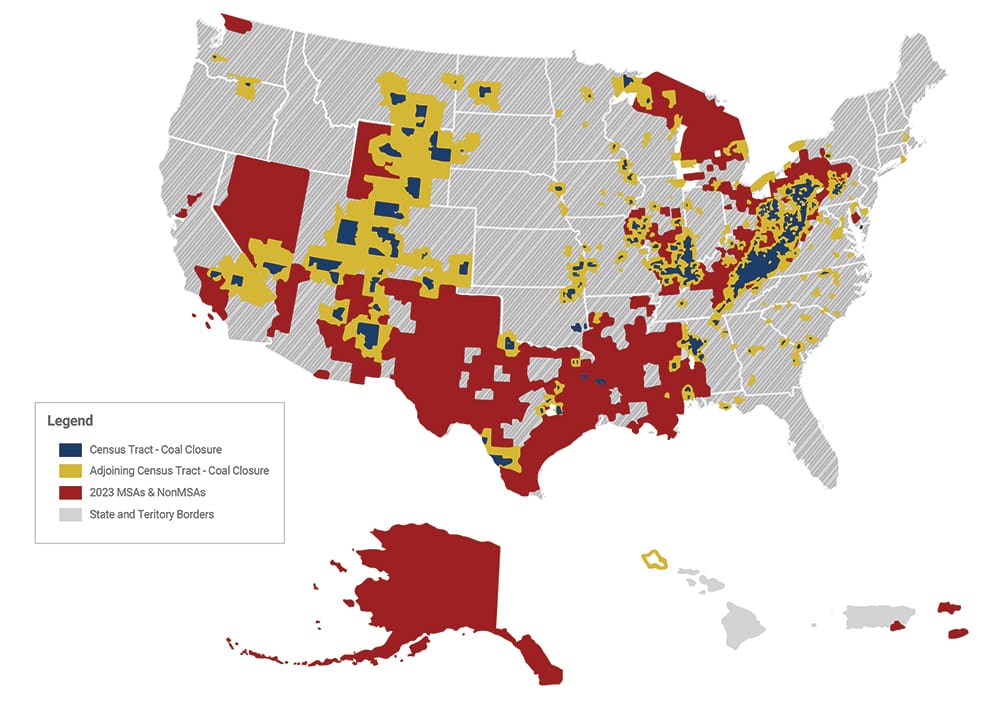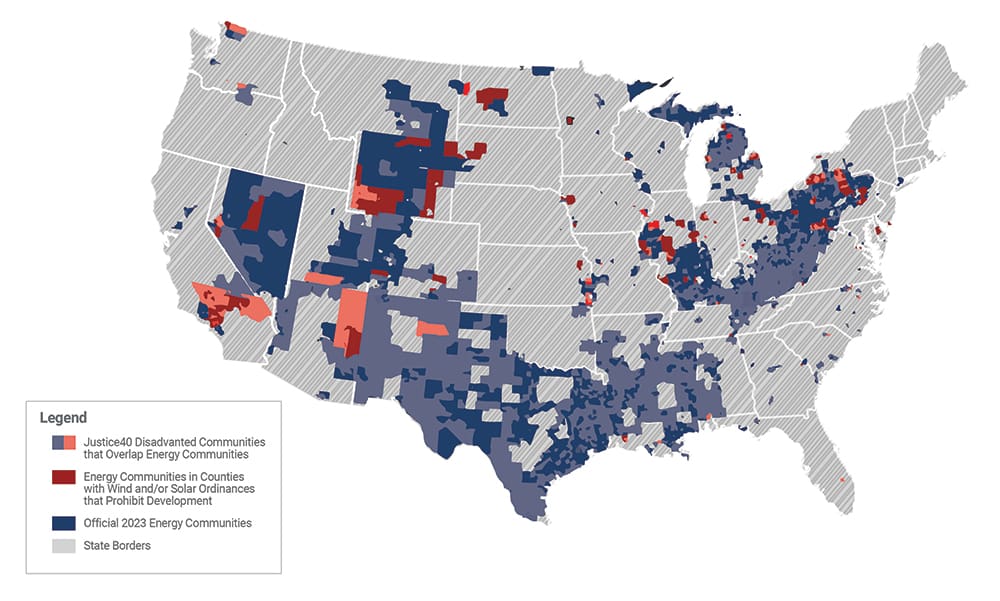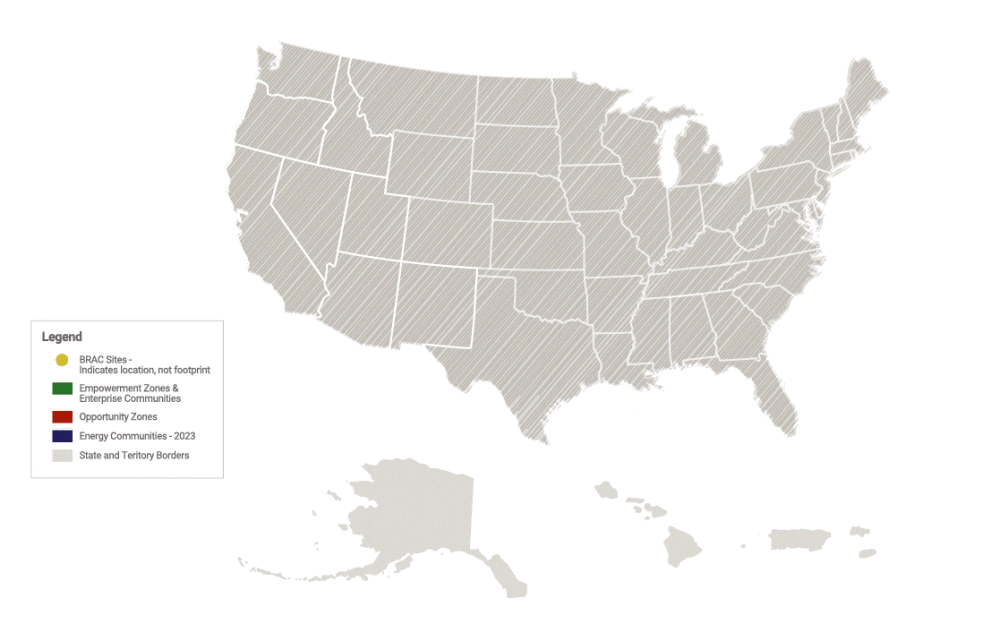The Energy Community maps are here. What’s next for deployment?
Thousands of towns and communities across the country have been providing the power and fuel needed to run America for decades. While many of these “Energy Communities” are still booming, others have experienced plant closures or waning extraction efforts. Congress has passed new financial incentives to encourage investments in these areas, but now we need to fix permitting to allow the developers to build.
Let’s look at where we are today. The U.S. Treasury Department released new guidance in June to define Energy Communities eligible for new increased clean energy tax incentives. These areas include brownfield sites, areas where a coal mine or coal-fired power plant has recently closed, and areas that have high levels of fossil fuel employment. Unsurprisingly, this guidance includes many of the communities across Appalachia, the Gulf Coast, Upper Midwest and the Mountain West.
Official 2023 Energy Communities

So, what does this guidance mean? New clean energy projects located in these communities, covering 48% of the U.S. and Puerto Rico, will now be eligible for a 10% bonus on top of other clean energy tax incentives from the Inflation Reduction Act. This means that some projects will now receive tax incentives as high as 50% of the total project cost. With proper implementation, these incentives are poised to boost investment in domestic manufacturing and clean energy production throughout these newly qualified regions.
ClearPath provided implementation recommendations last year to ensure these new incentives were well-positioned and durable. While the guidance adheres to many of the ClearPath recommendations, clarification of key provisions would help maximize the potential impact of the Energy Communities provision.
For example, in its guidance, the U.S. Treasury Department highlighted numerous areas where the data used to determine an Energy Community could be more clear to assist the private sector in determining the locations that qualify as an Energy Community. The three pieces of data that need clarity were: a lack of centralized data for local tax revenues related to fossil fuel resources, an incomplete inventory of brownfield sites, and incorrect geographic coordinates in the National Mine Safety Administration dataset. Ensuring these are addressed in subsequent guidance can provide greater certainty for developers as they determine where to best site projects.
But even with attractive financial incentives, the arduous permitting process before projects can even begin construction remains a huge problem. Congress created an incentive to build clean energy projects in Energy Communities, yet these projects receive no regulatory relief to allow them to move forward on a more predictable timeline. The success or failure of the Energy Communities program will depend on projects actually being built.
Projects in Energy Communities Still Face Permitting Challenges

In fact, many of these new Energy Communities are areas where heightened local opposition has all but stymied new development through local, county, or state level bans or other forms of onerous regulations designed to stop projects in their tracks.
Nonetheless, the Administration and supporters of the Inflation Reduction Act have been touting these projects. During his State of the Union address earlier this year, President Biden said, “I’ll see you at the groundbreaking,” referring to the clean energy projects that will be built as a result of the law passed without Republican support.
In reality, breaking ground on any of these projects requires a permit. And, the Administration has failed to put forward a meaningful plan to fix the permitting bottlenecks. While the debt ceiling deal enacted through the Fiscal Responsibility Act included some minor changes to the permitting process, much more must be done to deploy projects at scale nationwide.
It is essential that a final deal on permitting includes three principles.
First, we need to identify areas for development where unnecessary bureaucracy should not delay economic and environmental benefits of these projects.
For example, replacing a retiring power plant with a zero-emissions advanced nuclear generator at an existing site or building a battery manufacturing facility on a brownfield site should not require a yearslong permitting process.
A list of precleared geographic areas should include these Energy Communities, previously disturbed locations that are well categorized sites, and areas where new generators can utilize existing infrastructure. The environmental impacts to these locations related to energy deployment are minimal, and in many cases these locations are in or near communities that need the redevelopment most urgently.
Congress could consider ways to pair regulatory incentives with existing financial incentives, either through these newly identified Energy Communities or other tax advantaged areas such as federal Opportunity Zones established by Congress. Together, these areas could accelerate deployment in 54 percent of the country.
Map of Existing Areas Congress Has Designated for Financial Incentives
